During the Coronavirus lockdown, those people close enough to take their permitted daily walk on a beach are finding a variety of marine eggs and may be wondering what sea creatures are producing them. I thought a brief guide of the more commonly found eggs might help.
As the birds are busy building nests and laying eggs in our gardens, parks and countryside, so the intertidal and shallow water marine animals are doing the same on our seashores. Of course not all marine animals lay eggs but there are a few groups which lay quite distinctive egg masses, strings, ribbons and clusters.
The first group that springs to mind are the sea slugs and nudibranchs, types of mollusc with an extremely reduced shell or no shell at all. In the spring they gather in the intertidal zone to breed and lay their egg strings or ribbons. These are long gelatinous cords, with multiple tiny eggs dotted inside, that may be wound into a variety of shapes, from frilly, hair-scrunchy style designs, to twisted strings of beads or chaotic tangles. Examples include the Sea lemon egg ribbons, Grey sea slug eggs and Sea hare ‘silly string’. Each species has its own unique pattern but the general design is similar.
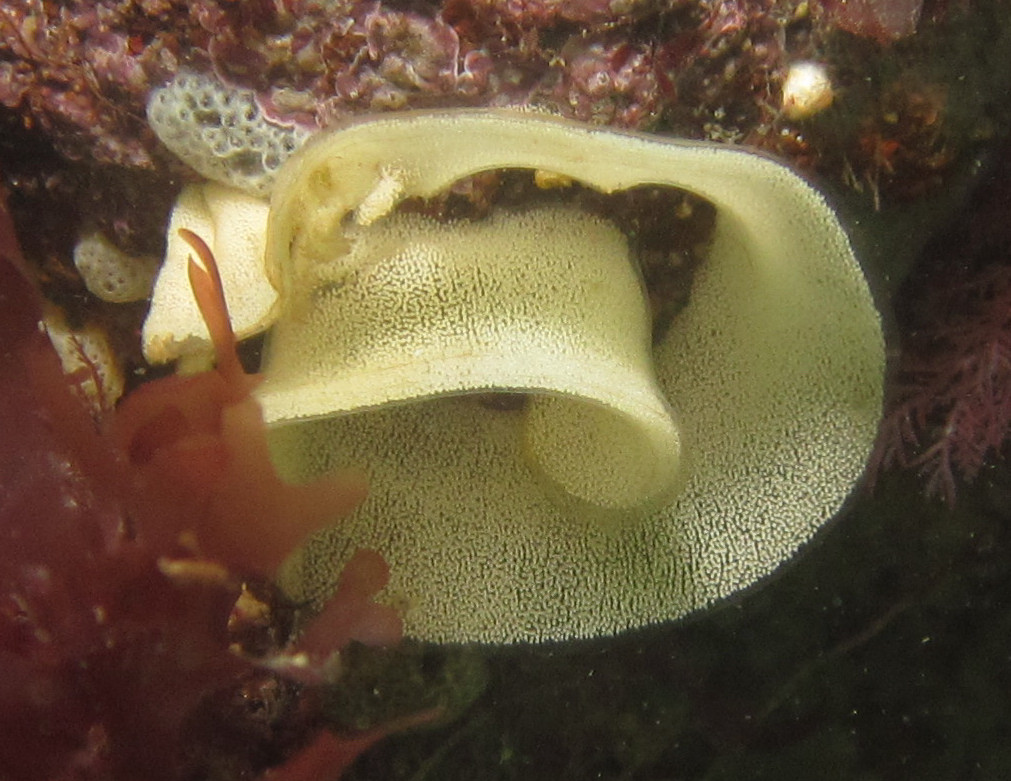
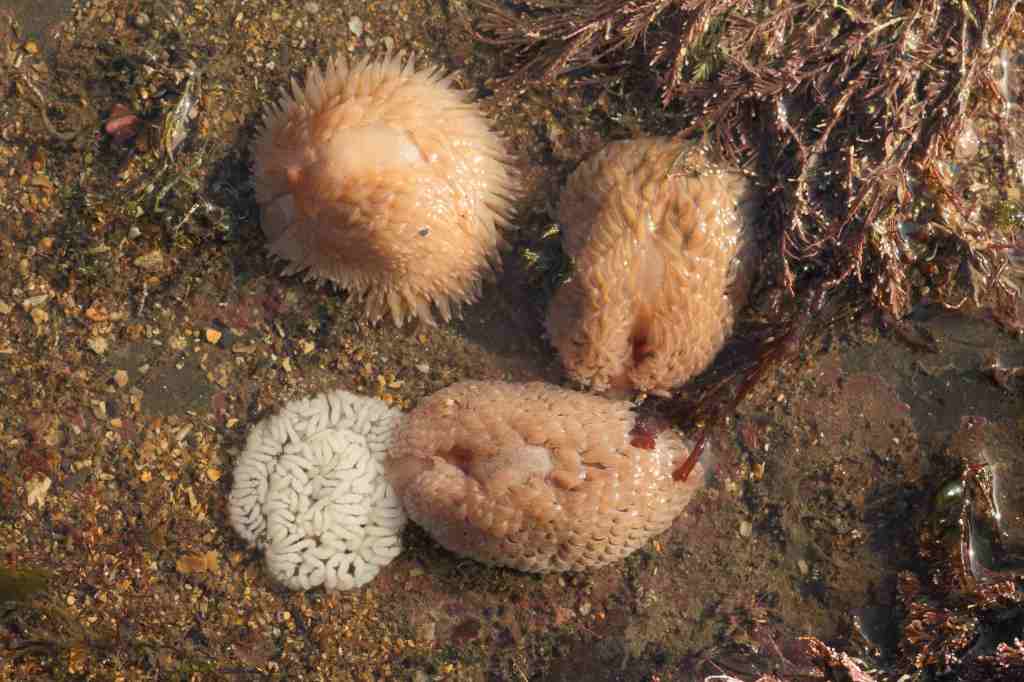
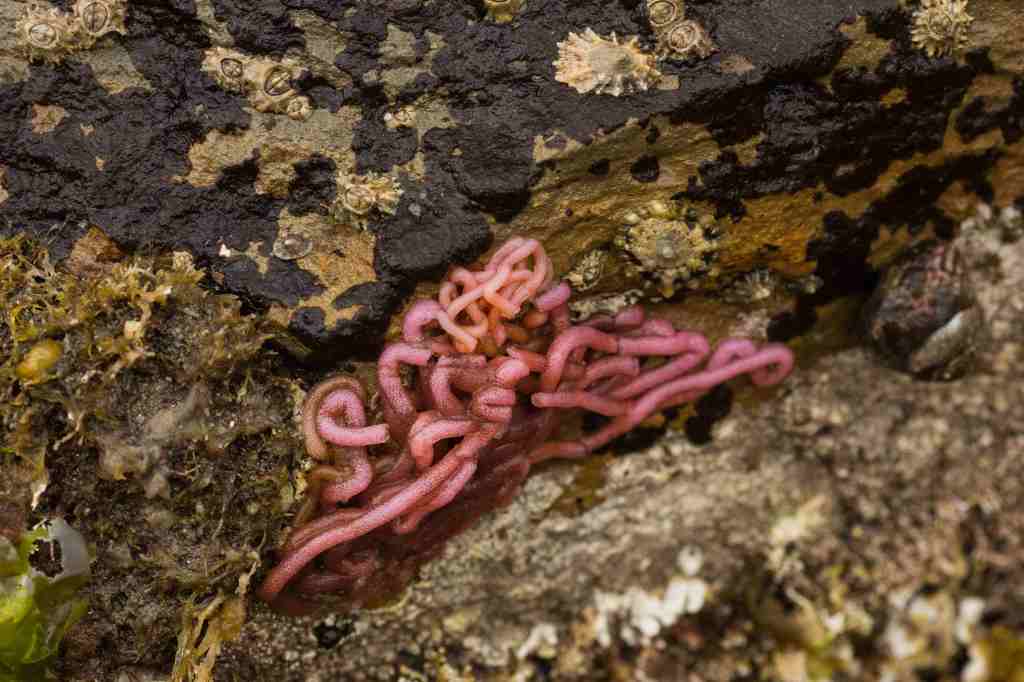
Another egg-laying group of molluscs are the whelks and sting winkles, which lay their tiny eggs in clusters of flasks, capsules and lens-shaped containers. Again, each species has its unique shape of container and may produce these in random clusters or regimented rows attached to rocks, seaweed and eelgrass stems. The clusters of golden vase-shaped flasks produced by the Dog whelk are commonly found in crevices and beneath seashore rocks at this time of year.
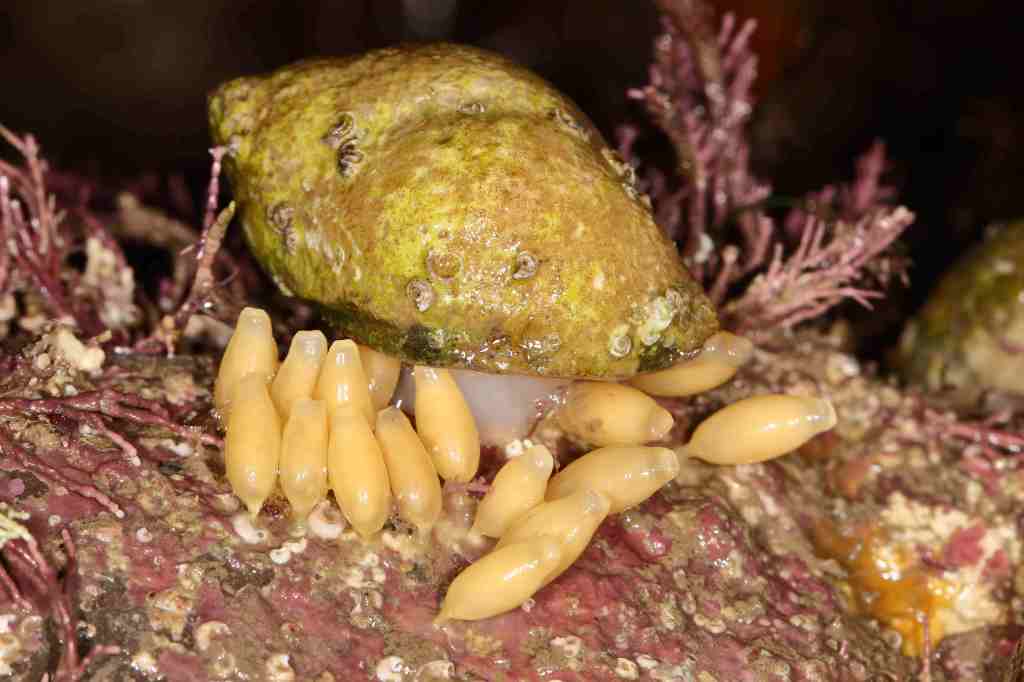


The Flat periwinkle, an abundant sea snail found amongst the wrack seaweeds on rocky seashores, lays 5p coin-sized, flattened jelly discs on the alga’s frond. Inside the clear gel, minute pale dots can be seen. Each is the teeny tiny shell of a baby periwinkle and when ready they will crawl from the protective gel to live on the same seaweed as their parents. The diminutive chink shell lays a similar egg mass on its host alga, looking like a tiny ring doughnut.
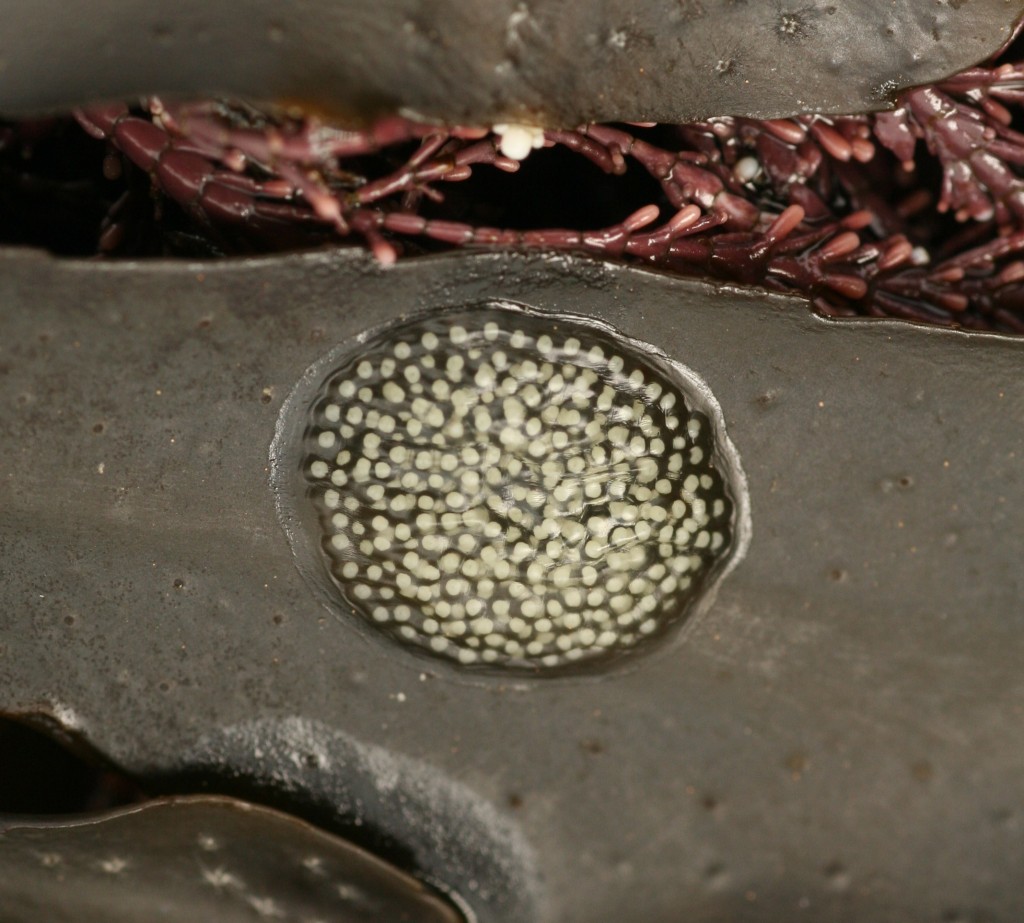
The egg masses of a diverse array of marine worms are also laid in a transparent gelatinous matrix which keeps them hydrated while they develop. These tend to be laid in what can only be described as blobs! They vary in shape and size and even colour. In early spring, the shallow water and rock pool seaweeds are festooned with the green jelly blobs of paddleworms, the colourful eggs visible through the gel coating. Other worm species that live buried beneath sandy seabeds produce blobs that are attached at a point that emerges from their sandy burrow. Occasionally these are left exposed during very low tides.
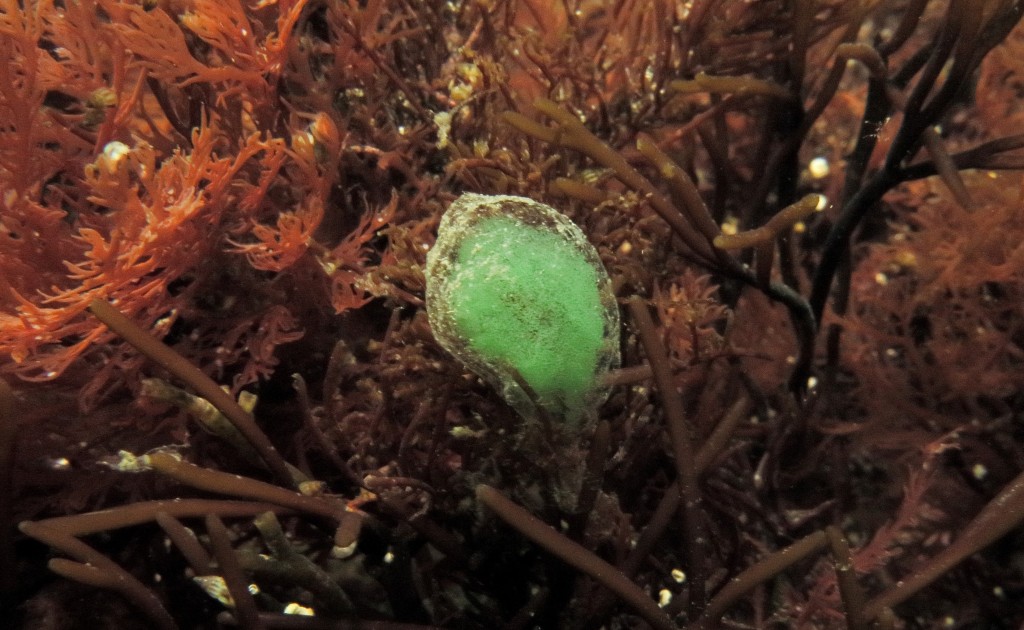
Other prolific egg-layers are rock pool fish. Hidden beneath intertidal rocks they lay patches of eggs. If you find a patch, look for the parent fish nearby as the dedicated fathers usually stay close by to guard their precious offspring from potential predators and will not move far. The colour of the eggs change as they develop from being mostly yolk to mostly fish fry with their silvery eyes peering out from inside. You may even see the babies wriggling inside their eggs.
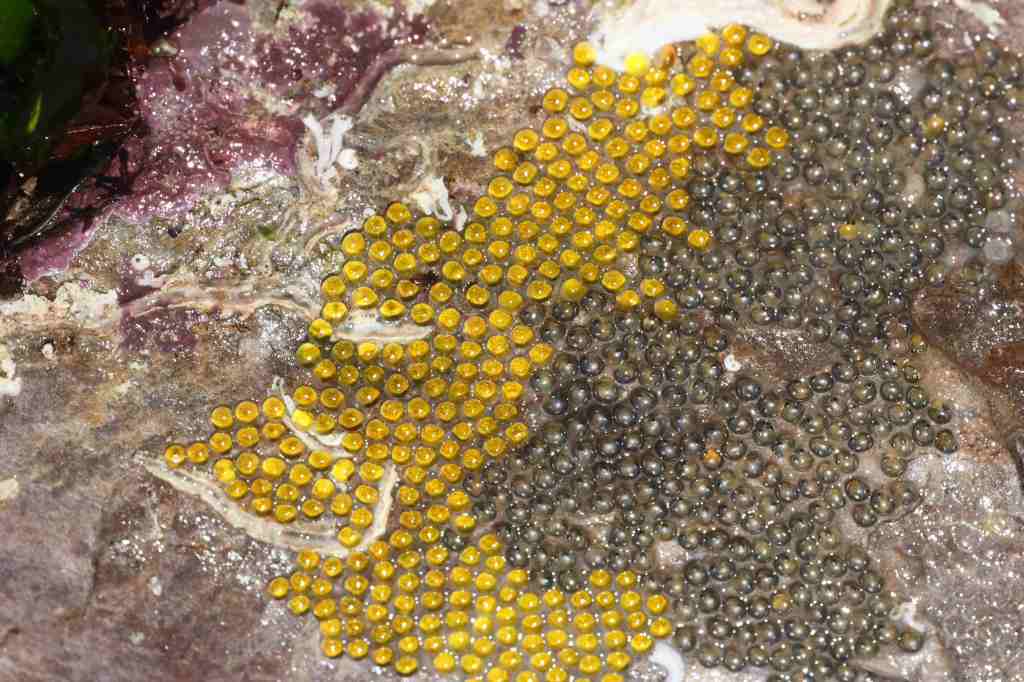

Again, each fish species lays a unique patch or cluster of eggs so that it is usually possible to identify which type of fish they belong to, even if you can’t spot the father. Clingfish lay golden globes in a single layer on the rock. Rock goby eggs are teardrop shaped, laid in a single layer but covering a more extensive area. The spherical eggs of blennies are also laid in a single layer whereas sea scorpions lay their multi-faceted eggs in an uneven cluster, often filling a gap between rocks or in a crevice.

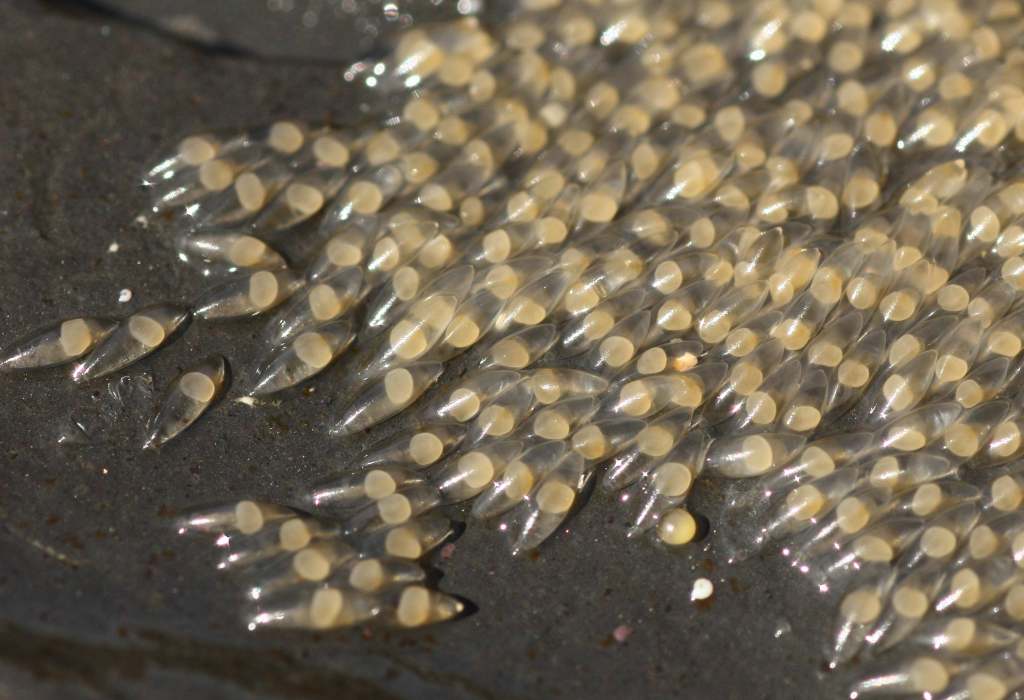
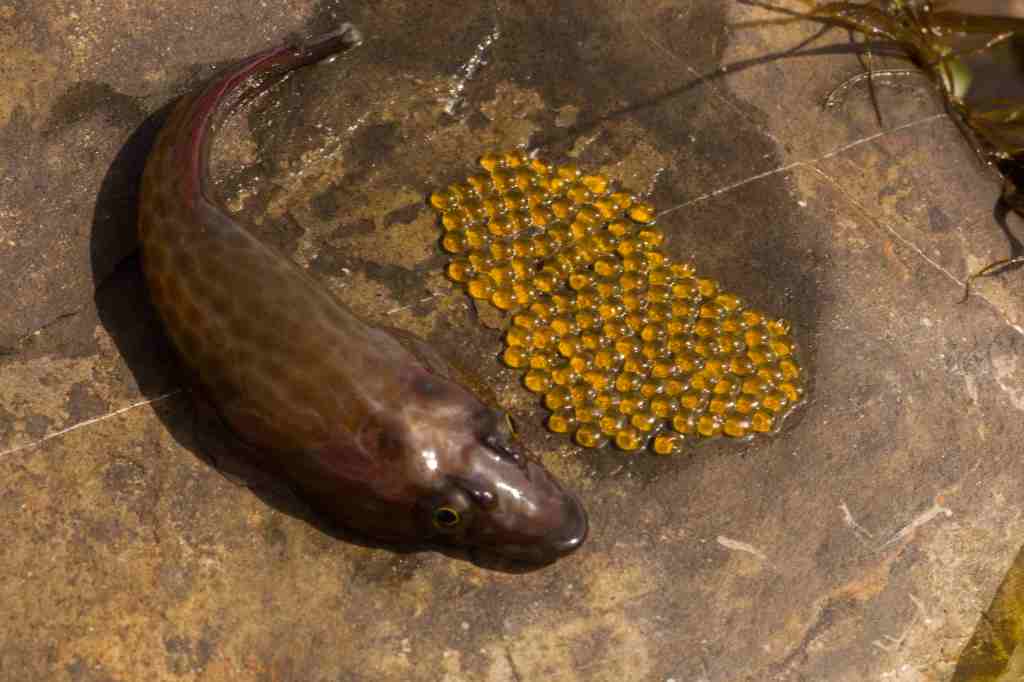


Crabs and other crustaceans do things a bit differently. The female carries her cluster of eggs beneath her body, tucked under her abdomen. These eggs also change colour as they develop and can be quite bright colours depending on the species and stage of development, including bright orange, red, purple and yellow. The eggs might not always be obvious unless you pick the crab up and look underneath. If you spot eggs you should put her straight back in her hiding place.

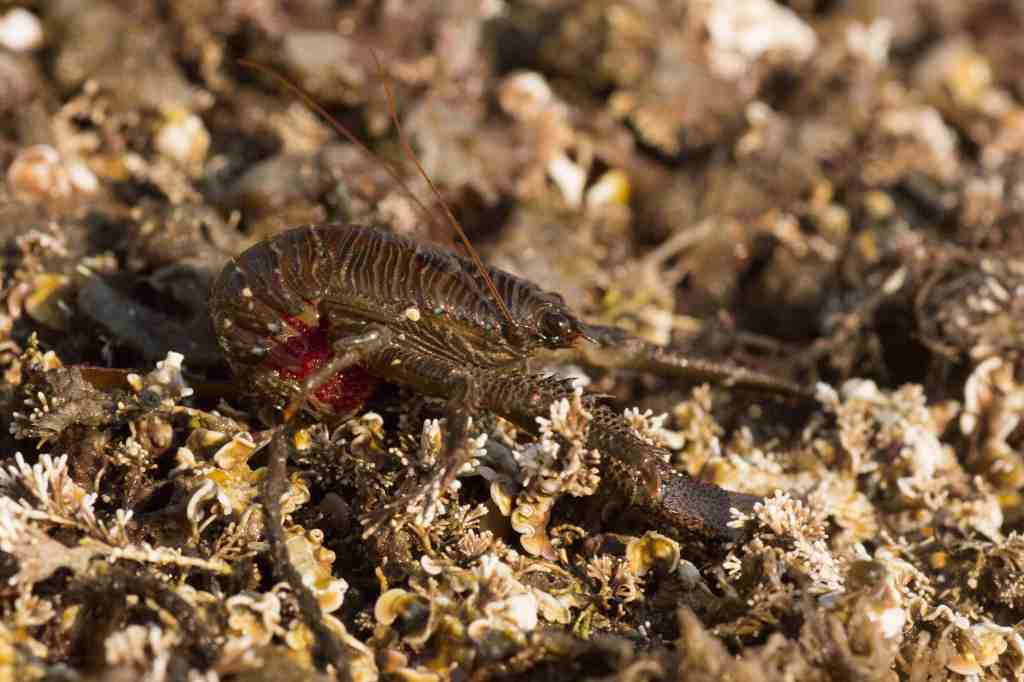

As well as eggs laid on the seashore, it is sometimes possible to find clusters of eggs that have been dislodged from the seabed, especially after stormy weather. Some marine creatures anchor their eggs to seabed structures such as seaweed, seafans, mooring chains, rope and fishing equipment. The pale sausage fingers of squid and black bunches of sea grapes laid by Common cuttlefish are regularly found. Unfortunately, once they have been dislodged from their anchorage they will wash ashore and dry out. Another common beach find is the seawash ball, the name given to the egg mass of the Common whelk. So-called because sailors are said to have used them as bath sponges, they consist of a mass of lens-shaped capsules glued together into a ball. When washed onto the beach they are usually empty, the hatchlings having already left.

With all this activity going on at the beach it is especially important to avoid disturbance. Always gently replace any rocks exactly as you found them, taking care not to squash eggs or animals sheltering beneath. Do not leave eggs or animals exposed to sun and air any longer than necessary – a quick look and maybe a snapshot photo is all you need for later identification. Avoid trampling through rock pools, seaweed and over loose rocks where animals and eggs might be taking cover. Leave eggs and parents in situ.
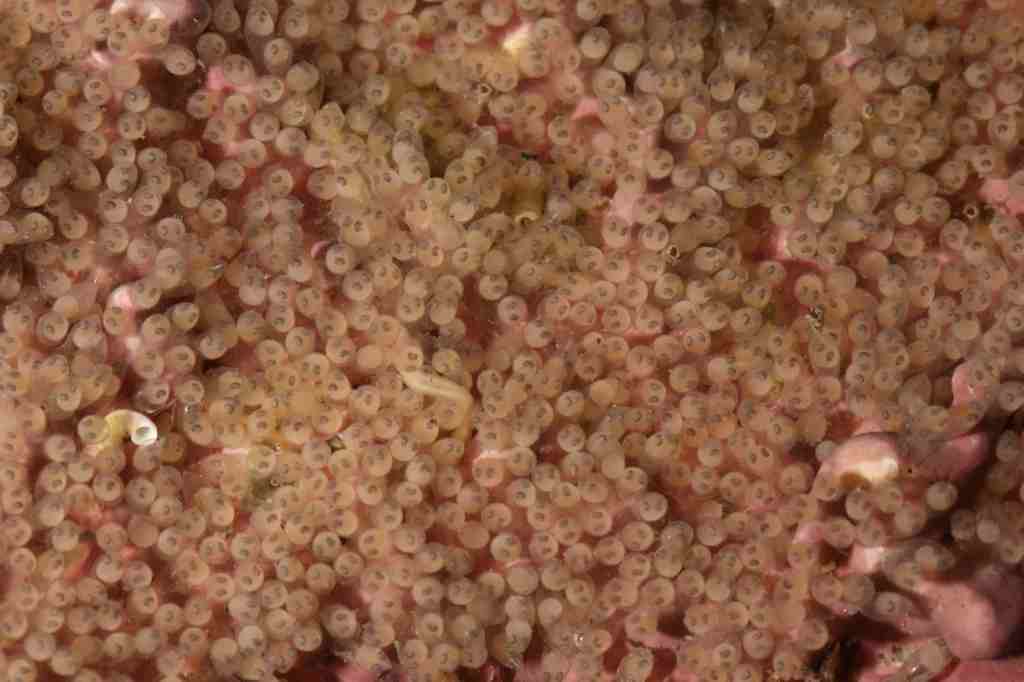
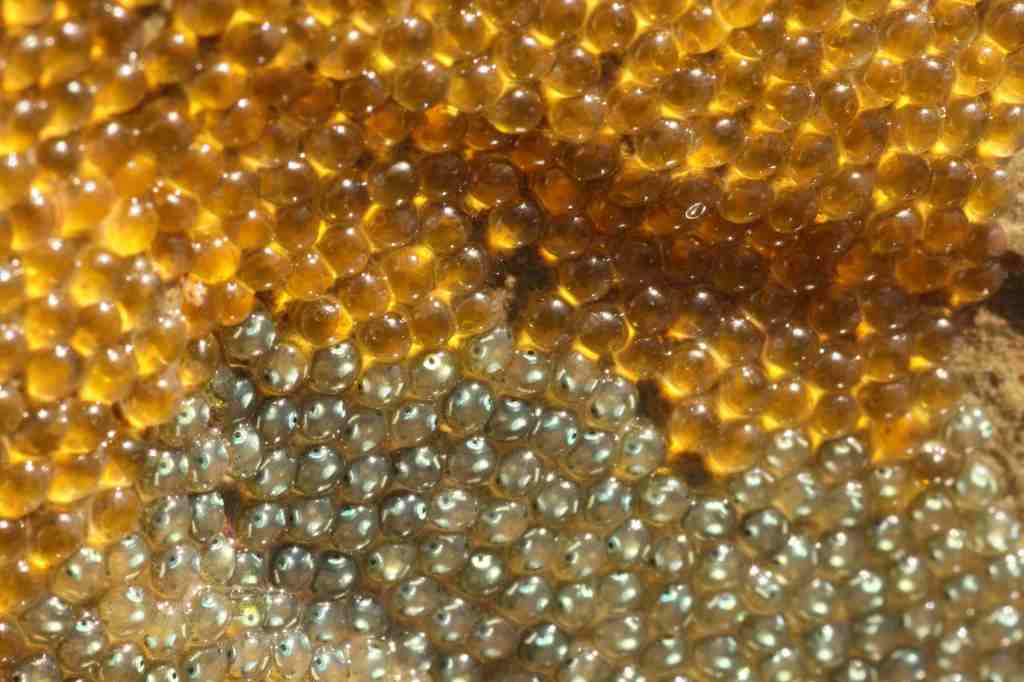

Amazing stuff 😊
LikeLike
this is really cool!
LikeLike
Exceedingly helpful and easy to understand! Fascinating stuff!
LikeLike